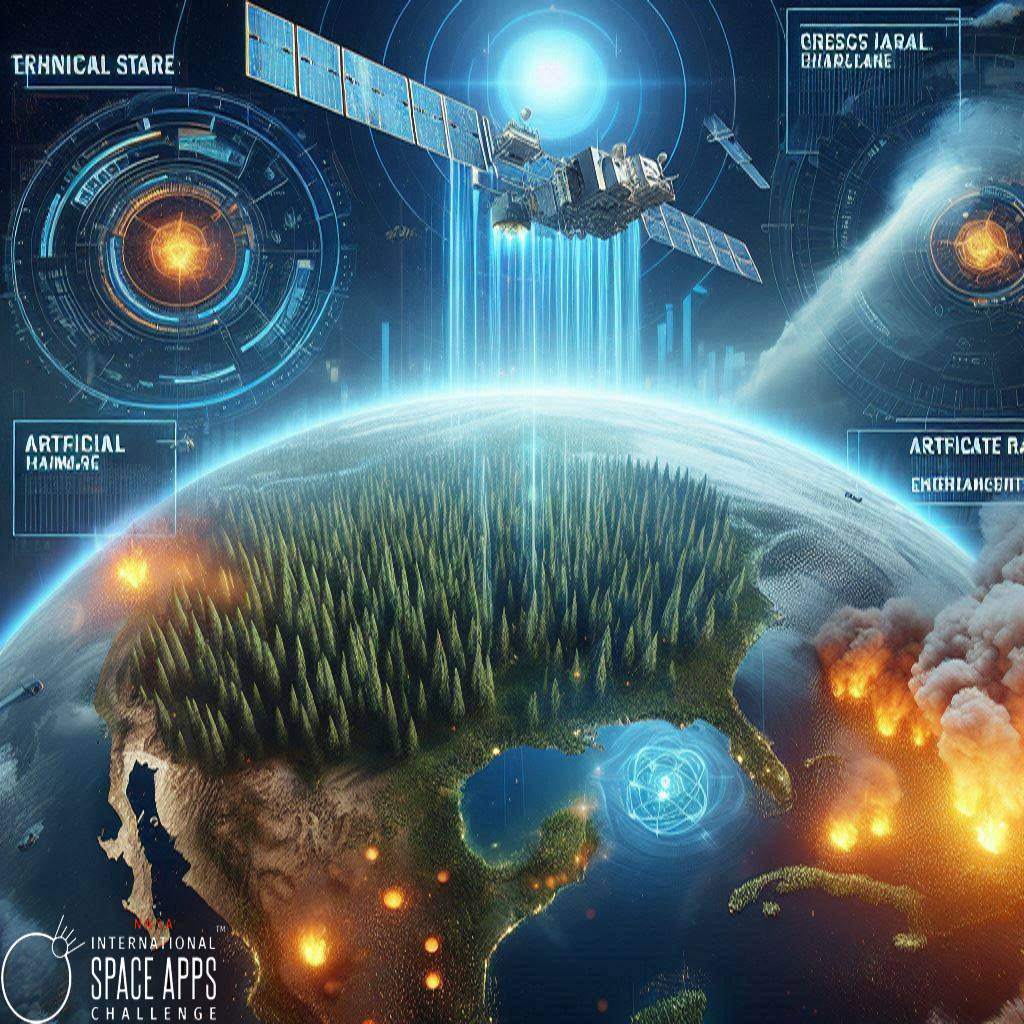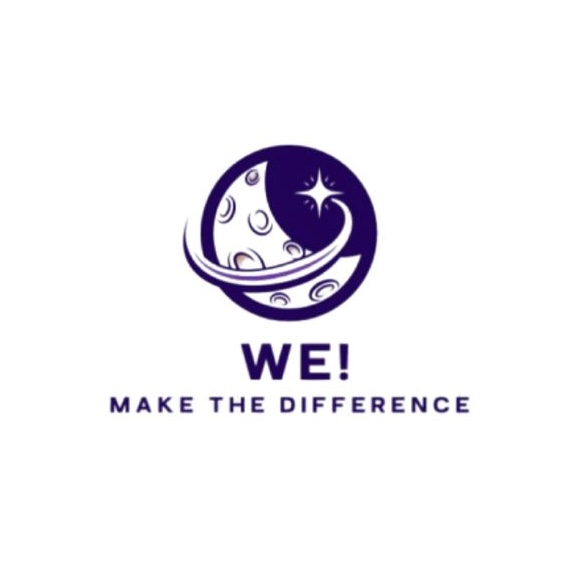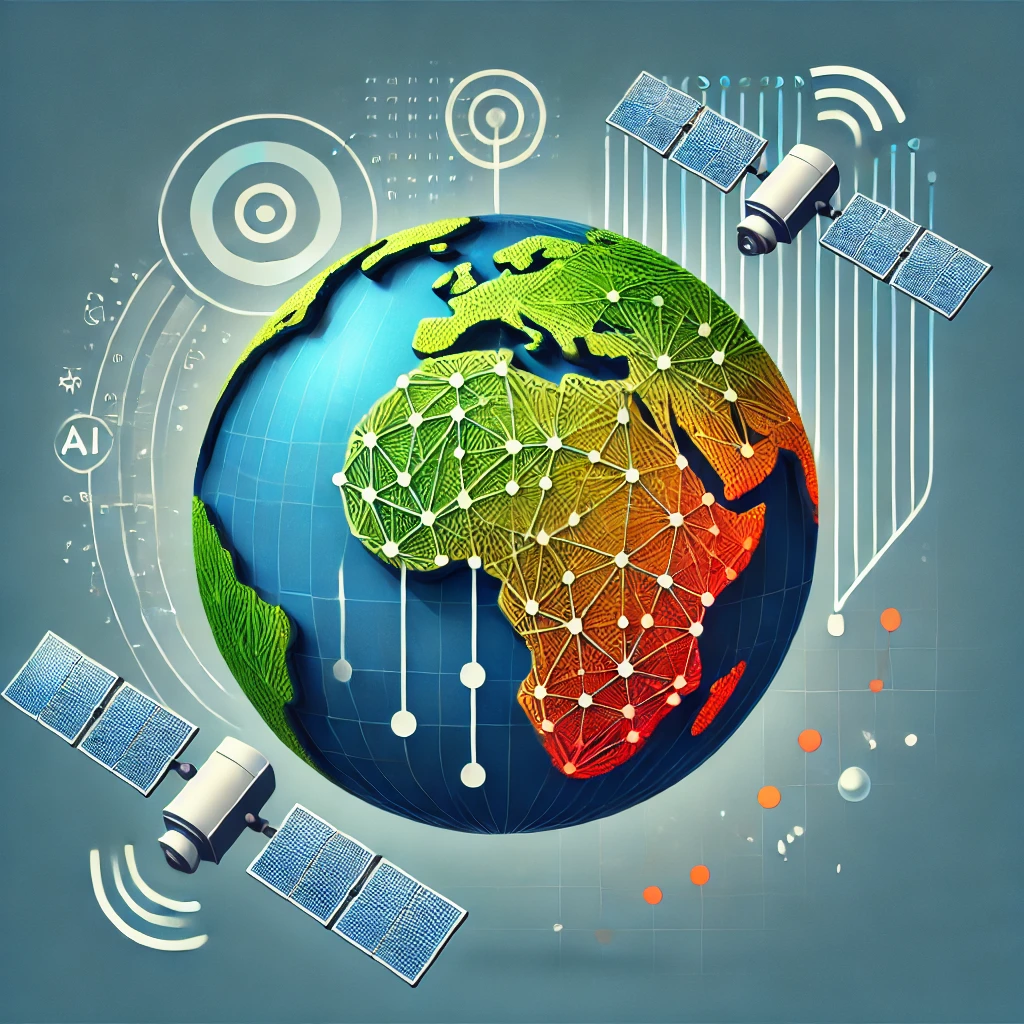Background
Human emissions of greenhouse gases (GHG), most notably carbon dioxide (CO2) and methane (CH4), are the main driver of climate change. Together, these two gases have increased the atmosphere’s ability to trap heat by 80% relative to pre-industrial times. Due to increasing concentrations of greenhouse gases, the past 10 years have been the warmest years on record, resulting in changes in extreme weather, rising sea levels, and increased threats to food and water security in many regions. The U.S. Greenhouse Gas Center (US GHG Center), an interagency effort initiated by the White House in 2023, aims to make data on climate change available and accessible to all. The center currently focuses on three main topics.
Topic 1: Human-caused Emissions
Topic 2: Natural GHG Sources and Sinks
Topic 3: Large Emission Events
Objectives
Your challenge is to use a combination of satellite and model-based datasets to map both human-caused and natural greenhouse gas emissions to enable better understanding of how these emissions contribute to a warmer world. By using innovative combinations of satellite and model data, your project could enable new insights and approaches that help users—including communities and decision-makers—better understand the three focus areas described above (human-caused GHG emissions, natural sources and sinks of GHG emissions, and large GHG emission events).
There are numerous ways to approach this challenge (see the Potential Considerations below for some example approaches you could take). Will your maps reflect data on a neighborhood scale or a global scale? Think about how you could help provide high-quality GHG information to decision-makers to assist them in their fight against climate change.
You can use the datasets provided on the GHG Center data portal and if you choose, you can combine that data with additional satellite information to provide the higher spatial resolution data needed for certain policy and scientific applications.
Potential Considerations
You may (but are not required to) consider the following:
General Considerations:
Considerations for Topic 1: Human-Caused Emissions. Possible approaches and considerations for the human-caused emissions category include:
Including automated updates for plumes detected over a specific region. The system could send alerts to users with the information if a plume in the region is detected.
Considerations for Topic 2: Natural Sources and Sinks. Possible approaches and considerations for the natural sources and sinks category include:
Considerations for Topic 3: Large Emission Events. Possible approaches and considerations for the large emission events category include:
Definitions (adapted from NASA and IPCC)
For data and resources related to this challenge, refer to the Resources tab at the top of the page. More resources may be added before the hackathon begins.

Medina
Sep 08, 2024
Uncover the Role of Greenhouse Gases in Your Neighborhood!
Uncover the Role of Greenhouse Gases in Your Neighborhood!
"أن الثورة التكنولوجيه التي يشهدها العالم اليوم شملت جميع مرافق الحياة المختلفة بما في ذلك الجانب الصناعي ، حيث اخذت النشاطات الصناعية بالتزايد والتوسع الكبيرين ، مما أدى الى التأثير على البيئة التي يعيشها الانسان بشكل سلبي . حيث يلاحظ بأن طبقة التروبوسفير قد بدأت تتغير ويختل توازنها بسببب زيادة حجم الملوثات ، وهذه المشكله في التلوث تعود الى عدة اسباب منها استغلال واستنزاف موارد الطاقه ، كالفحم والطاقه النووية وزيادة تركز السكان والصناعات في المدن . فالصناعة تعد من الاسباب الرئيسية للتلوث إلا انه لا غنى عنها للتنمية في قطرنا لذا يجب التقليل من اثر التلوث المنبعث منها، وهذا يتطلب اجراء المزيد من الدراسات والمسوحات الدقيقة لما يوجد في المدن منها حاليا او على مقربه منها وما تبعثة من فضلات وابخرة ومواد وغازات سامه وتأثيراتها على البيئة . هدف البحث التعرف على الاضرار التي نتجت من دخان المصانع وكيفية حل هذه المشكلة، هنالك مشاكل كثيره نتجت بسبب دخان المصانع مما لا يساعد على سرعة تحقيق رؤية 2030 وهي (البيئة الصحية) . الجمهور المستهدف : تم أستهداف المجتمع بأكمله لكونه يعاني من دخان المصانع "
Our team needs 2 membersRequest to Join the Team |

albaha
Sep 08, 2024
Uncover the Role of Greenhouse Gases in Your Neighborhood!
Uncover the Role of Greenhouse Gases in Your Neighborhood!
تطوير برنامج يدعم الذكاء الاصطناعي وGIS يجمع بين البيانات المناخية العالمية والتغيرات الناتجة عن التوسع العمراني. سيعمل هذا النظام على التنبؤ بالأحداث المناخية القاسية (مثل الأعاصير والفيضانات وموجات الحر) في المناطق الأكثر تعرضًا للخطر بسبب زيادة انبعاثات الغازات المسببه للاحتباس الحراري الناجمة عن الأنشطة الحضرية ويقوم بتحديد المناطق الاقل عرضه للخطر لتصميم المناطق السكنيه بتقنيات البقاء المستدامه.
Our team needs 3 membersRequest to Join the Team |

Medina
Sep 08, 2024
Uncover the Role of Greenhouse Gases in Your Neighborhood!
Uncover the Role of Greenhouse Gases in Your Neighborhood!
بينما الأغلب يحاول صنع خرائط تفاعلية على مستوى محلي لرصد تركيز الغازات الدفيئة، سنقوم هنا بتغيير الزاوية قليلاً حيث ان " رابِل " لن يكون مجرد خريطة تفاعلية بل سيكون نظام متكامل يظهر رؤية شاملة لجميع العوامل المؤثرة في المناخ ،وسيكون أداة لدراسة العلاقة المعقدة بين هذه العوامل ، سوف نركز على إظهار كيف يعمل الكون مما يتيح لنا فرصة لأكتشافات علمية جديدة ! هل هناك عوامل اخرى غير تقليدية تقوم بالتأثير على تركيز الغازات الدفيئة ؟ ...، واخيراً سنقدم حلول مبتكرة وواقعية لتكون أثر حقيقي على الأرض ، أطمح ان يستفيد الباحثين من خريطتنا كما السياسين وصُناع القرار في منطقة ما.
Our team needs 5 membersRequest to Join the Team |

Riyadh
Sep 08, 2024
Uncover the Role of Greenhouse Gases in Your Neighborhood!
Uncover the Role of Greenhouse Gases in Your Neighborhood!
يهدف مشروع "على خطى النبي" إلى تشجير طريق الهجرة النبوية من خلال زراعة 280 مليون شجرة على مساحة 45000 هكتار. يعتمد المشروع على تكنولوجيا الفضاء، مثل الأقمار الصناعية، لتحديد المواقع المثلى للتشجير ورصد التغيرات البيئية. باستخدام برنامج QGIS لتحليل البيانات الجغرافية، يسعى المشروع إلى تحسين جودة الهواء وتقليل انبعاثات الكربون بمقدار 6.16 مليون طن سنويًا. يهدف إلى تعزيز التنوع البيولوجي ودعم المجتمع المحلي من خلال توفير فرص عمل وزيادة الدخل. يتماشى المشروع مع رؤية السعودية 2030 لتعزيز الاستدامة البيئية وتحقيق التنمية المستدامة، مستلهمًا من القيم النبوية.
Our team needs 2 membersRequest to Join the Team |

Tabuk
Sep 08, 2024
Uncover the Role of Greenhouse Gases in Your Neighborhood!
Uncover the Role of Greenhouse Gases in Your Neighborhood!
"## **اقتراحات لتطبيق ""اكتشف دور الغازات المسببة للاحتباس الحراري في منطقتك!""** ### **الفكرة الأساسية:** يهدف التطبيق إلى توعية المستخدم بأثر تغير المناخ على بيئته المحلية، وتمكينه من اتخاذ خطوات عملية للمساهمة في الحد من انبعاثات الغازات الدفيئة. ### **الميزات الرئيسية:** * **حساب الأثر الكربوني الشخصي:** يسمح للمستخدم بتقدير بصمته الكربونية من خلال إدخال بيانات بسيطة عن نمط حياته. * **استكشاف مصادر الانبعاثات المحلية:** يعرض خريطة تفاعلية للمصادر الرئيسية للانبعاثات في المنطقة. * **نصائح عملية:** يقدم نصائح مخصصة للمستخدم للحد من انبعاثاته. * **تحديات ومكافآت:** يحفز المستخدم على اتخاذ إجراءات مستدامة من خلال نظام مكافآت. ### **الجمهور المستهدف:** * **الأفراد المهتمون بالبيئة:** الطلاب، العائلات، المهتمون بالاستدامة. * **صناع القرار المحلي:** المسؤولون عن البلديات والمناطق. ### **كيفية العمل:** 1. **التسجيل:** يقوم المستخدم بتسجيل حساب وإدخال بعض المعلومات الأساسية. 2. **حساب الأثر الكربوني:** يدخل المستخدم بيانات عن نمط حياته (النقل، التغذية، الطاقة) ويحصل على تقدير لانبعاثاته. 3. **استكشاف المنطقة:** يستعرض المستخدم الخريطة التفاعلية لمعرفة مصادر الانبعاثات في منطقته. 4. **الحصول على نصائح:** يتلقى المستخدم نصائح مخصصة للحد من انبعاثاته. 5. **المشاركة في التحديات:** ينخرط المستخدم في تحديات مع أصدقائه. ### **الوصف القصير:** **""اكتشف تأثيرك على كوكبنا!""** تطبيق يمكّنك من فهم بصمتك الكربونية واقتراح طرق عملية للحد منها. استكشف مصادر الانبعاثات في منطقتك وتعلم كيف تساهم في بناء مستقبل أكثر استدامة. ### **المميزات الفريدة:** * **شخصي:** يقدم نصائح مخصصة لكل مستخدم. * **تفاعلي:** يوفر تجربة ممتعة من خلال التحديات والمكافآت. * **محلي:** يركز على التأثيرات المحلية لتغير المناخ. "
Our team needs 4 membersRequest to Join the Team |

Jeddah
Sep 08, 2024
Uncover the Role of Greenhouse Gases in Your Neighborhood!
Uncover the Role of Greenhouse Gases in Your Neighborhood!
تهدف هذه الدراسة الى التعرف على اسباب المشکلة وسبل المواجهة من خلال برامج بالتخفيف والتکييف. الى جانب تعزيز وتيرة التنمية المستدامة في الدول ، بما في ذلك تحقيق الأهداف الإنمائية للمحافظة على حماية البيئة من الاحترار الأرضي .

Dhahran
Sep 08, 2024
Uncover the Role of Greenhouse Gases in Your Neighborhood!
Uncover the Role of Greenhouse Gases in Your Neighborhood!
"الحي الودود": لعبة تفاعلية مبتكرة تهدف لزيادة الوعي حول تغير المناخ. تستهدف الطلاب، المهتمين بالبيئة، وصناع القرار. تتميز بتركيزها المحلي، واستخدامها لبيانات علمية دقيقة، وتجربة لعب جذابة، وتشجيعها على اتخاذ إجراءات إيجابية. نثق بقدرتها على إحداث تأثير كبير في فهم قضية التغير المناخي وبناء مستقبل مستدام.
Our team needs 1 membersRequest to Join the Team |

Bisha
Sep 08, 2024
Uncover the Role of Greenhouse Gases in Your Neighborhood!
Uncover the Role of Greenhouse Gases in Your Neighborhood!
This project aims to develop a smart program leveraging artificial intelligence and the Internet of Things to monitor air quality in tourist areas. The program will enable the tracking of harmful emissions and provide accurate analyses of pollution levels in real-time. It includes the creation of interactive maps that utilize a color-coded system to illustrate pollution levels, allowing both visitors and government agencies to make informed decisions regarding public health and safety. Additionally, the program will analyze historical data to offer future predictions on air quality, helping to identify potential risks and plan appropriate preventive measures.****
Our team needs 5 membersRequest to Join the Team |